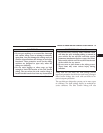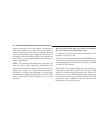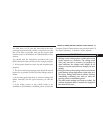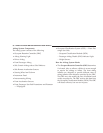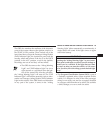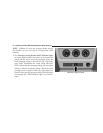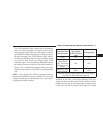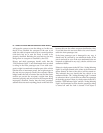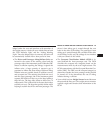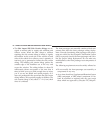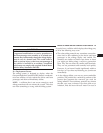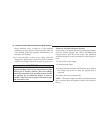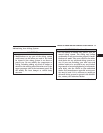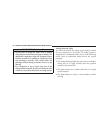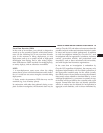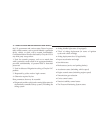
lodged under the seat and interferes with operation of
the weight sensors, a fault will occur which turns on both
the “PAD Indicator Light” and the “Airbag Warning
Light.” Once the lodged object is removed, the fault will
be automatically cleared after a short period of time.
•
The Driver and Passenger Airbag/Inflator Units are
located in the center of the steering wheel and the
passenger side of the instrument panel. When the ORC
detects a collision requiring the airbags, it signals the
inflator units. A large quantity of non-toxic gas is
generated to inflate the front airbags. Different airbag
inflation rates are possible, based on collision severity
and occupant size. The steering wheel hub trim cover
and the upper passenger side of the instrument panel
separate and fold out of the way, as the bags inflate to
their full size. The bags fully inflate in about 50 to 70
milliseconds. This is about half of the time that it takes
to blink your eyes. The bags then quickly deflate while
helping to restrain the driver and front passenger. The
driver’s front airbag gas is vented through the vent
holes in the sides of the airbag. The passenger’s front
airbag gas is vented through the vent holes in the sides
of the airbag. In this way, the airbags do not interfere
with your control of the vehicle.
•
The Occupant Classification Module (OCM) is lo-
cated beneath the front passenger seat. The OCM
classifies the occupant into categories based on the
measurements made by the seat weight sensors. The
OCM communicates with the Occupant Restraint Con-
troller (ORC). The ORC uses the occupant category to
determine whether the front passenger airbag should
be turned off. It also determines the rate of airbag
inflation during a collision.
•
Your vehicle has four Weight Sensors located between
the seat and the floor pan. The weight sensors measure
applied weight and transfers that information to the
OCM.
THINGS TO KNOW BEFORE STARTING YOUR VEHICLE 63
2



